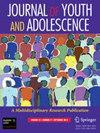他们为什么说出来(或不说出来):支持和反对在青少年受害者中披露网络诱骗的原因。
IF 3.6
1区 心理学
Q1 PSYCHOLOGY, DEVELOPMENTAL
引用次数: 0
摘要
在这一脆弱的发展阶段,青少年普遍使用信息和通信技术,有可能遭受网络侵害,包括作为一种性侵害形式的网络诱骗。虽然在传统的虐待研究中建立了,但在网络诱骗受害的特定背景下对披露过程的研究仍在等待中。本研究探索性地调查了n = 400名网络诱骗受害者(44.1%;在N = 908名青少年参与者中,男性= 15.48岁,女性:57.5%)。大多数受害者向某人透露(86%),与同龄人(73%)相比,向成年人(55%)透露的频率更高。研究结果表明,在支持和反对披露的原因上,小效应大小的差异取决于知己(同龄人与成年人;例如,其他人对类似经历的报告在同行披露中更为相关)。然而,性别对评估的原因几乎没有影响。在结构方程模型中,反对披露的潜在因素、个体内部和个体间的原因对同伴和成人的披露有不同程度的预测作用,反对披露的原因对两种情况的预测作用最大。对成年人的披露比对同伴的披露更能得到解释(r2同伴= 28.6%,r2成人= 46.9%)。在开放式项目中,参与者提供了进一步的原因,这些原因被分成几类(例如,寻求帮助、警告/预防、害怕欺凌/社会排斥)。实际意义,如期望的一致性之间的原因披露和知己的反应,和限制,如忽视披露的过程特征被概述。本文章由计算机程序翻译,如有差异,请以英文原文为准。
Why They Speak Up (or Don't): Reasons For and Against Cybergrooming Disclosure Among Adolescent Victims.
The ubiquitous use of information and communication technologies among adolescents carries the risk of exposure to online victimization during this vulnerable stage of development, including cybergrooming as a form of sexual victimization. Although established in traditional abuse research, studies on disclosure processes in the specific context of cybergrooming victimization are still pending. The present study exploratively investigated reasons for and against disclosure following cybergrooming victimization in the subsample of n = 400 victims (44.1%; Mage = 15.48 years, girls: 57.5%) from N = 908 adolescent participants. Most victims disclosed to someone (86%), with peer disclosure being more frequent (73%) than disclosure to adults (55%). Findings indicated differences of small effect sizes in reasons for and against disclosure depending on the confidant (peers vs. adults; for example, the reporting of similar experiences by others was more relevant in peer disclosure). However, gender had almost no influence on the assessed reasons. In structural equation models, latent factors of reasons against, and intra- and interindividual reasons for disclosure predicted peer and adult disclosure to varying degrees, with reasons against disclosure being the most predictive in both cases. Disclosure to adults could be better explained than disclosure to peers (R2peers = 28.6%, R2adults = 46.9%). In open-ended items, participants provided further reasons, which were grouped into categories (e.g., help-seeking, warning/prevention, fear of bullying/social exclusion). Practical implications like the aspired congruence between reasons for disclosure and confidants' reactions, and limitations such as the neglect of the processual character of disclosure are outlined.
求助全文
通过发布文献求助,成功后即可免费获取论文全文。
去求助
来源期刊

Journal of Youth and Adolescence
PSYCHOLOGY, DEVELOPMENTAL-
CiteScore
8.20
自引率
6.10%
发文量
155
期刊介绍:
Journal of Youth and Adolescence provides a single, high-level medium of communication for psychologists, psychiatrists, biologists, criminologists, educators, and researchers in many other allied disciplines who address the subject of youth and adolescence. The journal publishes quantitative analyses, theoretical papers, and comprehensive review articles. The journal especially welcomes empirically rigorous papers that take policy implications seriously. Research need not have been designed to address policy needs, but manuscripts must address implications for the manner society formally (e.g., through laws, policies or regulations) or informally (e.g., through parents, peers, and social institutions) responds to the period of youth and adolescence.
 求助内容:
求助内容: 应助结果提醒方式:
应助结果提醒方式:


